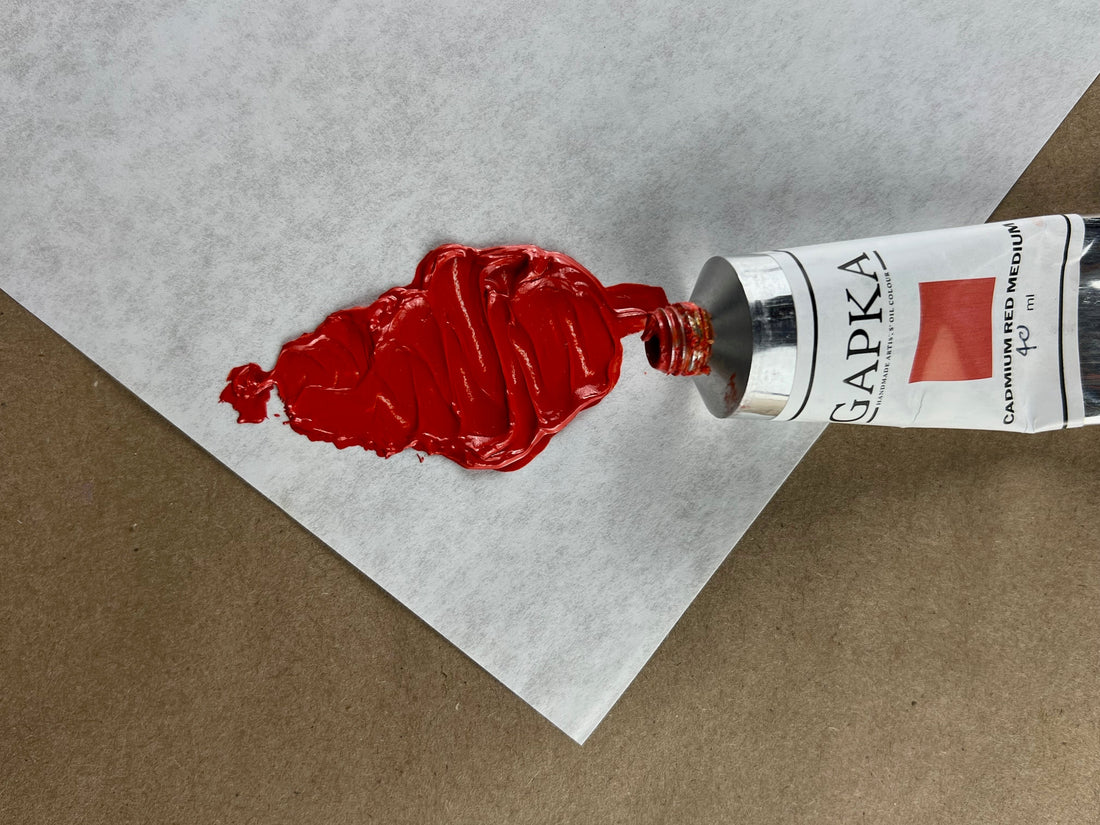
Why Our Oil Paint Colors Vary in Consistency
You may notice that each of our oil colors has its own unique consistency and feel. Some are naturally softer, while others lean more stiff or dense. This isn’t a flaw, it’s a direct result of the pigment itself and part of what makes handcrafted oil paint so beautiful.
At the heart of every oil paint lies its pigment or pigments – the finely ground particles that provide color. These pigments are sourced from a wide array of natural and synthetic substances, each imbuing the paint with distinct properties.
Binder Composition:
One key element in oil paint formulation is the binder – the medium that holds the pigment particles together and adheres them to the painting surface. Traditional oil paints utilize linseed oil as the binder, however, some companies may incorporate other oils or fillers such as wax for specific effects or to regulate the natural variety of consistencies that can occur in oil paints.
At Gapka, we never add fillers to our oil paints in order to affect the natural consistency of the color.
Different pigments have varying affinities for the binder, affecting how they disperse and interact within the paint mixture. You can see this clearly in the videos below.
Ultramarine Violet (PV-15) is a pigment that will tend towards a more fluid consistency compared to many other colors, leading many to believe that it contains more oil. However, Ultramarine Violet actually contains about 10% less oil by volume in our formulas than Pyrrole Red (PR-254). You can see below that the Pyrrole red is significantly thicker in texture and the Ultramarine Violet is less able to hold its shape when moved with the pallet knife than the Pyrrole Red even though it has less oil.
Particle Size Matters:
Another crucial factor influencing the consistency of oil paints is the particle size of the pigment. Finely ground pigments tend to create smoother, more fluid paints, while coarser particles can result in thicker, more textured mixtures. This variance in particle size impacts how the paint handles on the canvas and interacts with other pigments and mediums. Here you can see our Gold oil paint on the mill. Because of the mica in the pigment we do not want to over mill and lose the reflective qualities so you can see the paint will appear more grainy.
Chemical Properties:
The chemical composition of pigments also plays a significant role in determining their consistency. Certain pigments possess inherent characteristics that influence how they behave when mixed with oil. For instance, organic pigments derived from plant or animal sources may exhibit different flow properties compared to inorganic mineral pigments due to their molecular structure.
Environmental Factors:
External factors such as temperature and humidity can further impact the consistency of oil paints. Higher temperatures may cause the binder to become more fluid, leading to thinner paint, while cooler conditions can cause the oil to thicken, resulting in a stiffer consistency. Humidity levels can also affect drying times and paint flow, particularly in humid environments where drying may be slower.
Understanding the relationship between pigments and consistency empowers artists to make informed choices in their creative endeavors. By selecting pigments with complementary consistencies, artists can achieve desired effects such as smooth blends, impasto textures, or intricate details. Experimentation with different pigments and mediums allows for endless possibilities in artistic expression.
In the world of oil painting, the varying consistencies of paints made with different pigments are not merely a matter of chance but a result of complex interactions between materials and processes.
At Gapka our paint making process is guided by the philosophy that the paintmaker should produce paints that best respect the natural properties of each pigment leaving modifications to texture, drying time, etc. to the artist.

1 comment
Are these paints good for wood and resin frames?